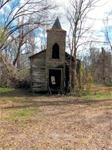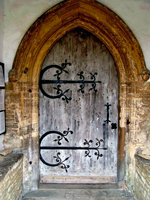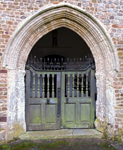 |
VISITING CHURCHES, PERMISSIONS TO PHOTOGRAPH ETC |
 |
 shops whose
opening times are somewhat arbitrary! And most French churches
- unlike French shops - do not close for lunch! Some
churches are kept locked: sometimes there appears to be a good
reason for this, such as repeated vandalism: other times there does not. For example, there
is a series of churches in the several villages along the same country road in Devon
which are part of a team benefice; three are kept open but one
is locked. It seems that the team clergy would like to keep all
their churches open but the parochial church council of the
church in question prefers to keep it locked. Incidentally, it
is also the least interesting church of the series. The main
insurance company for British churches prefers that they are
kept open because someone might just wander in at any time
and, if someone is up to no good in the church, they will be
discovered ; another reason is that if a thief wants to
enter the church, he will enter the church and may well cause considerably
more damage than if he just walked in to an open church.
shops whose
opening times are somewhat arbitrary! And most French churches
- unlike French shops - do not close for lunch! Some
churches are kept locked: sometimes there appears to be a good
reason for this, such as repeated vandalism: other times there does not. For example, there
is a series of churches in the several villages along the same country road in Devon
which are part of a team benefice; three are kept open but one
is locked. It seems that the team clergy would like to keep all
their churches open but the parochial church council of the
church in question prefers to keep it locked. Incidentally, it
is also the least interesting church of the series. The main
insurance company for British churches prefers that they are
kept open because someone might just wander in at any time
and, if someone is up to no good in the church, they will be
discovered ; another reason is that if a thief wants to
enter the church, he will enter the church and may well cause considerably
more damage than if he just walked in to an open church.Vandalism of churches I find difficult to understand: I have always thought that vandals were people who were angry at society for their own reasons and wanted revenge for society's injustices be they alleged or real . Surely churches are the last places they should attack: but churches are easy targets - like telephone boxes, bus shelters and similar - while what might be considered justifiable targets are definitely not: vandals prefer easy targets. Or perhaps vandals just like smashing anything up and have no agenda. Theft is easier to understand, of course: stolen items are often passed on to a dealer. There was a spate of thefts of those small stone heart burial monuments a few years ago. They were removed from their fittings with great skill and it was clear that they were being stolen to order for someone - a dealer or collector. I do not know of a dealer in church artifacts but I am aware of two 'respectable' dealers who certainly do receive stolen goods. 'I didn't know it was stolen', appears to be sufficient excuse to avoid prosecution.
The majority church thefts are carried out as a source of criminal income but not always. I visited a church in Hampshire years ago and the vicar told me that he had had several items stolen from his church and they had recently been recovered, for which he was delighted, of course, but also surprised. It seems that a number of churches in the area had been robbed at that time and the thief , an unlikely suspect, was an organ tuner who, of course, would have visited, without arousing any suspicion, many churches in the area. Strangely, he did not sell his acquisitions: he collected them as people collect stamps, books, and man hole covers. He just liked church artifacts. Beware the organ tuner! Another vicar in Hampshire of a rather damp church told me that this was the third time that the lead had been removed from his church's roof. Stripping lead from a roof: did nobody see this? I visited a Devon church to photograph some monuments and, when I had finished after an hour or so, visited a cafe opposite the church. The owner said that he had seen me going into the church and was just going to check 'to see if I was all right'. What he actually meant was 'to see if I was up to no good'. That's no problem: it is reassuring that there are people who do keep watch.
At one time it used to be said that the key was often kept somewhere in the porch, on top of a notice board or behind a seat for example. This may well have been for cleaners, flower arrangers and others who had regular business in the church. I have only ever come across this once: I had walked several miles to a small country church in Devon only to find it locked. I tossed my rather heavy walking stick onto a
 seat
in the porch in frustration and to my surprise the key fell to
the floor; it must have been secreted under the seat. I am not,
however, advising you to attack the fixtures and fittings in the
porch with stick! On another occasion I wrote to yet another
vicar in Hampshire asking for permission to visit
the church; this however turned out a
'redundant' church, as they used to be called at the time, but
the post office very efficiently, as always, delivered my letter to the
church's key holder. This person wrote to me and asked me to
telephone him for an appointment. This I did, indicating the day
I would like to visit and this caretaker rather curiously
gave me his address and said that a key would be available under
a large stone on the door step at 11.00 o'clock. I arrived
early, as I always do: there was the large stone, I looked under
it but
found
no key. I rang the door bell but there was no answer. I sat in my car
outside the house but the door did not open and no one arrived.
Just after 11.00 o'clock I walked up the short drive again, lifted the stone
and this time there was the key.
seat
in the porch in frustration and to my surprise the key fell to
the floor; it must have been secreted under the seat. I am not,
however, advising you to attack the fixtures and fittings in the
porch with stick! On another occasion I wrote to yet another
vicar in Hampshire asking for permission to visit
the church; this however turned out a
'redundant' church, as they used to be called at the time, but
the post office very efficiently, as always, delivered my letter to the
church's key holder. This person wrote to me and asked me to
telephone him for an appointment. This I did, indicating the day
I would like to visit and this caretaker rather curiously
gave me his address and said that a key would be available under
a large stone on the door step at 11.00 o'clock. I arrived
early, as I always do: there was the large stone, I looked under
it but
found
no key. I rang the door bell but there was no answer. I sat in my car
outside the house but the door did not open and no one arrived.
Just after 11.00 o'clock I walked up the short drive again, lifted the stone
and this time there was the key. However you do not have to hunt the key as many locked churches have a notice board at the gate or in the porch giving the name, address or telephone number of the key holder or holders. The house is often very near the church but may not be, so always take a mobile phone. In every case I have found the key holders more than happy to help. Sometimes they go along with you and are always very pleasant if, at times, rather garrulous. Of course they are keeping a watch on you but often will give you interesting information about the church. There
 was a church in the wilds of
North Yorkshire with a locked door and a notice board inside the
porch; unfortunately I could not read the notice board because
the porch itself was locked with a pair of those gates with
spikes on top. This is not usually the case however.
was a church in the wilds of
North Yorkshire with a locked door and a notice board inside the
porch; unfortunately I could not read the notice board because
the porch itself was locked with a pair of those gates with
spikes on top. This is not usually the case however.If you are planning a special journey to visit a church it is always advisable to write, telephone or e-mail to the vicar, rector or whoever is in charge of the church to ask if and when the church is open and, if it is not, who is the key holder. It is wise to mention the purpose of your visit. Always write in good time as with large teams of parishes the post office may not know where to deliver your letter immediately. The vicar of a small village may well no longer live in the vicarage and the Rector of Microtown may no longer even exist . Always state clearly that your photographs are for personal or academic use, if this is really the case, and not for personal gain or commercial purposes. If they really are for a commercial purpose do state this as there may, quite reasonably, be some financial arrangement involved . The contact details are now frequently on the internet and often on a site called A Church Near You. These normally give an e-mail address of the vicar, rector, priest-in-charge, secretary or other contacts for the church in question. However the internet is not always as up to date as we should like it to be and if your e-mail receives no reply and has not bounced back it may be that there is no one at the other end because the church is in interregnum. If you then write to the church your letter may well be delivered to the right person as the post office and postmen and women have more initiative and intelligence than the internet!
Even if you are not planning a special journey and you know the church is kept open, it is always polite to ask the church authorities for permission to take photographs anyway. I have never to date been refused this by a parish church. Cathedrals and some large churches, such as Tewkesbury Abbey, have a help desk where you may ask for permission. For a cathedral you can write to the Dean: he's in charge and will pass on your letter to the head verger, publicity officer or whoever deals with such letters. Some cathedrals charge an entry fee, some charge a fee for photography (and give you a stick on badge!) and some charge for both but these are not only variable but rather curious. Sometimes there is an extra charge for tripods or they are not allowed at all during certain times or ever; this is quite reasonable when a church has a large number of visitors. Sometimes flash is also subject to restrictions.
I have once been refused permission (and rather obstructively) in a cathedral and that was Durham Cathedral but they have now changed their rather unfortunate policy in this matter. Yes, you could obtain permission before their recent enlightenment but you had to ask for this in writing beforehand, the cost was restrictively high, the time you could spend severely limited, you were not allowed to include members of staff or children in your photographs, and you were not allowed to use either flash or tripod. This was mentioned on the Durham page on the internet. Westminster Abbey does not allow photography (they want to sell you their own large collection of photographs!) but I probably could not afford to visit this most expensive of churches anyway. I think St Paul's Cathedral does not generally allow photography but Amanda did take a large number and presumably wrote for and was given permission to do so.